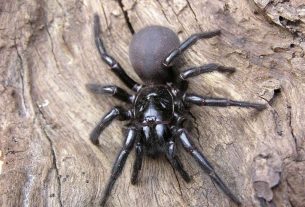A team from the University of California, Los Angeles (USA) have discovered that beta-amyloid, a protein that plays a vital role in Alzheimer’s disease, has a specific amino acid whose twist creates a harmful molecular zipper that leads to the death of neurons
Professor at the University of California, Los Angeles, David Eisenberg and an international team of chemists and molecular biologists reported in the journal ‘Nature’ in 2005 that amyloid fibrils, elongated and water-resistant harmful structures present in Alzheimer’s disease, they contain proteins that intertwine like the teeth of a zipper.
Now, the team has reported in the journal ‘Nature Communications’ that beta-amyloid protein, also known as a peptide, which plays a vital role in Alzheimer’s, has a normal version that may be less harmful than previously thought and an Age-damaged version formed by a second zipper that is more damaging.
To study the protein, RebeccahWarmack, a graduate student at the University of Virginia and lead author of the study, produced crystals in 15 of the amino acids of beta-amyloid using a type of cryoelectronic microscopy to analyze the crystals. Cryoelectronic microscopy, whose development earned its creators the Nobel Prize in Chemistry 2017, allows scientists to see large biomolecules in extraordinary detail.
Beta-amyloid protein contains 40 or more amino acids connected as a chain of beads in a necklace. Researchers have reported that with age, amino acid 23 can spontaneously form a twist ‘similar to a garden hose’ known as ‘isoAsp23’. The innovative element is that the normal version does not create a stronger second molecular zipper, but the curled shape does.
“We have shown that this twist leads to faster growth of fibrils that have been linked to Alzheimer’s disease,” said Steven Clarke, a professor of biochemistry who has researched brain biochemistry and Alzheimer’s disease since 1990.
Researchers have explained that this second molecular zipper is a double problem because it is compressed, and once the formation of fibrils begins, it cannot be stopped. Scientists believe that this twist initiates a dangerous cascade of events that can cause Alzheimer’s disease.
According to biochemists, the body has an enzyme that repairs the formation of these sprains but loses its effectiveness with age. “The repair enzyme could be 99.9 percent effective, but with 60 years or more sprains eventually build up. If they are not repaired or degrade in time, the sprain can spread to virtually all neurons and can cause tremendous damage,” Clarke explained.
The research opens the door to research by pharmaceutical companies, which now have the possibility of developing ways to prevent the formation of kinks or achieve better functioning of the repair enzyme.



